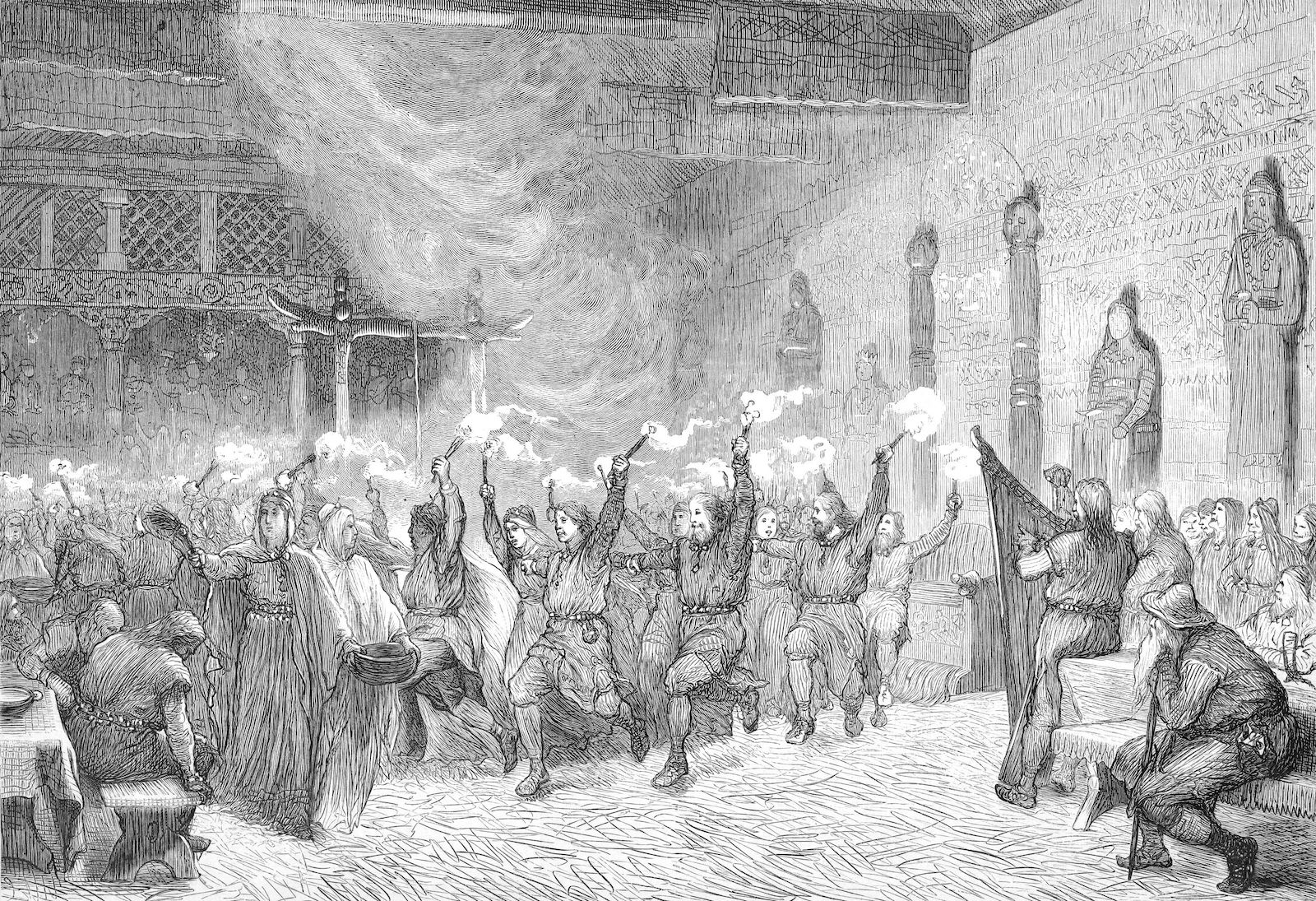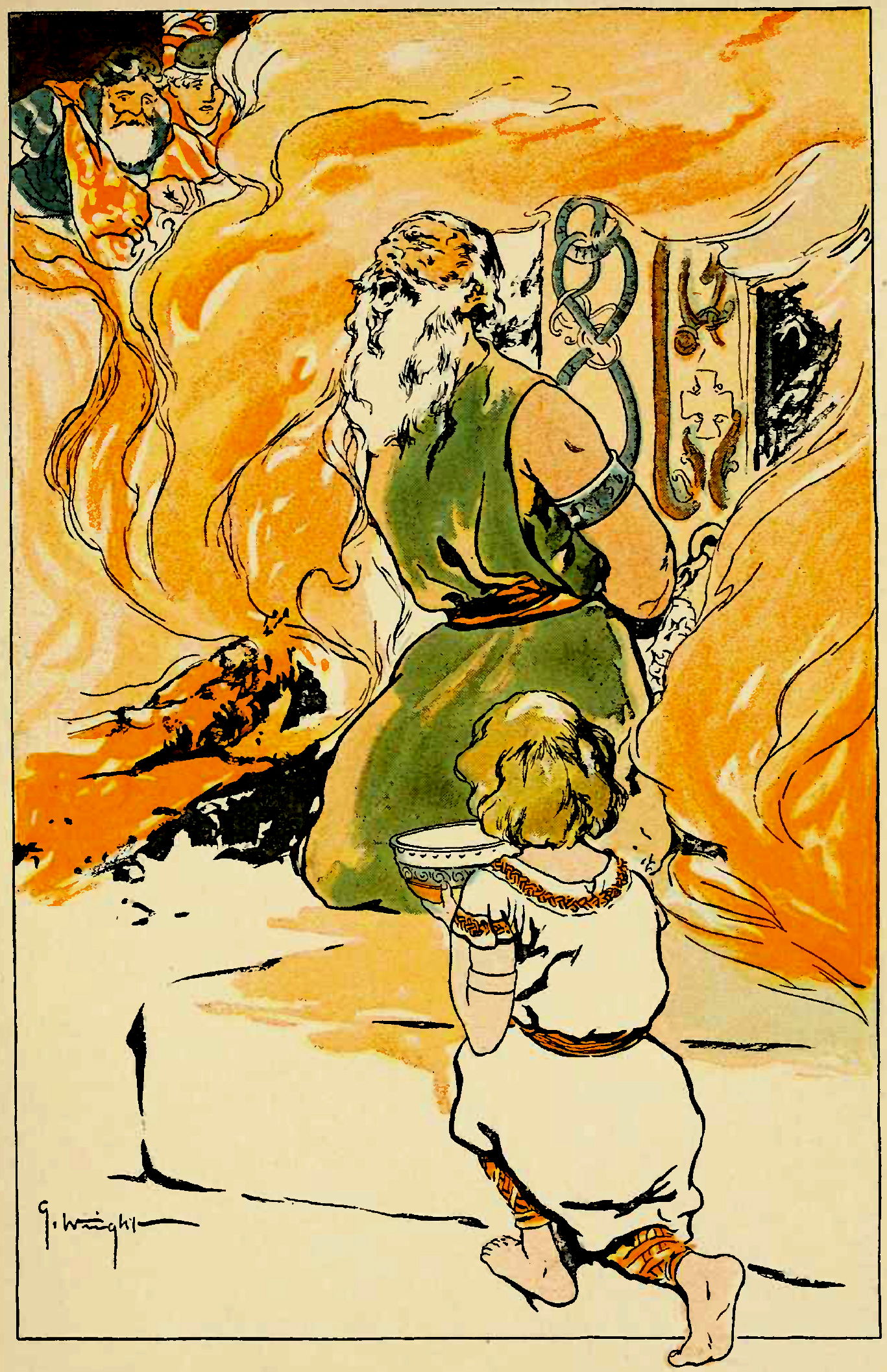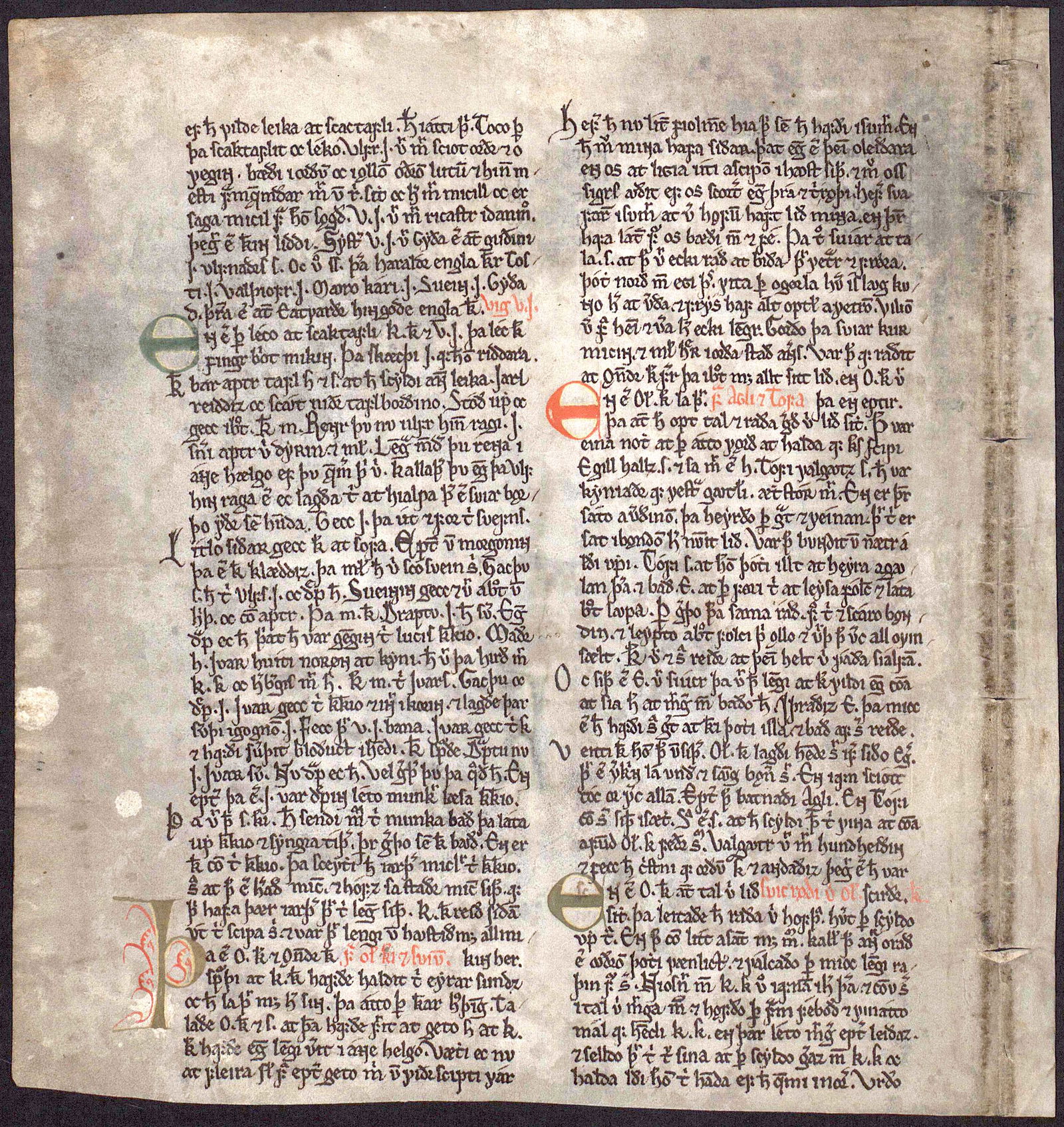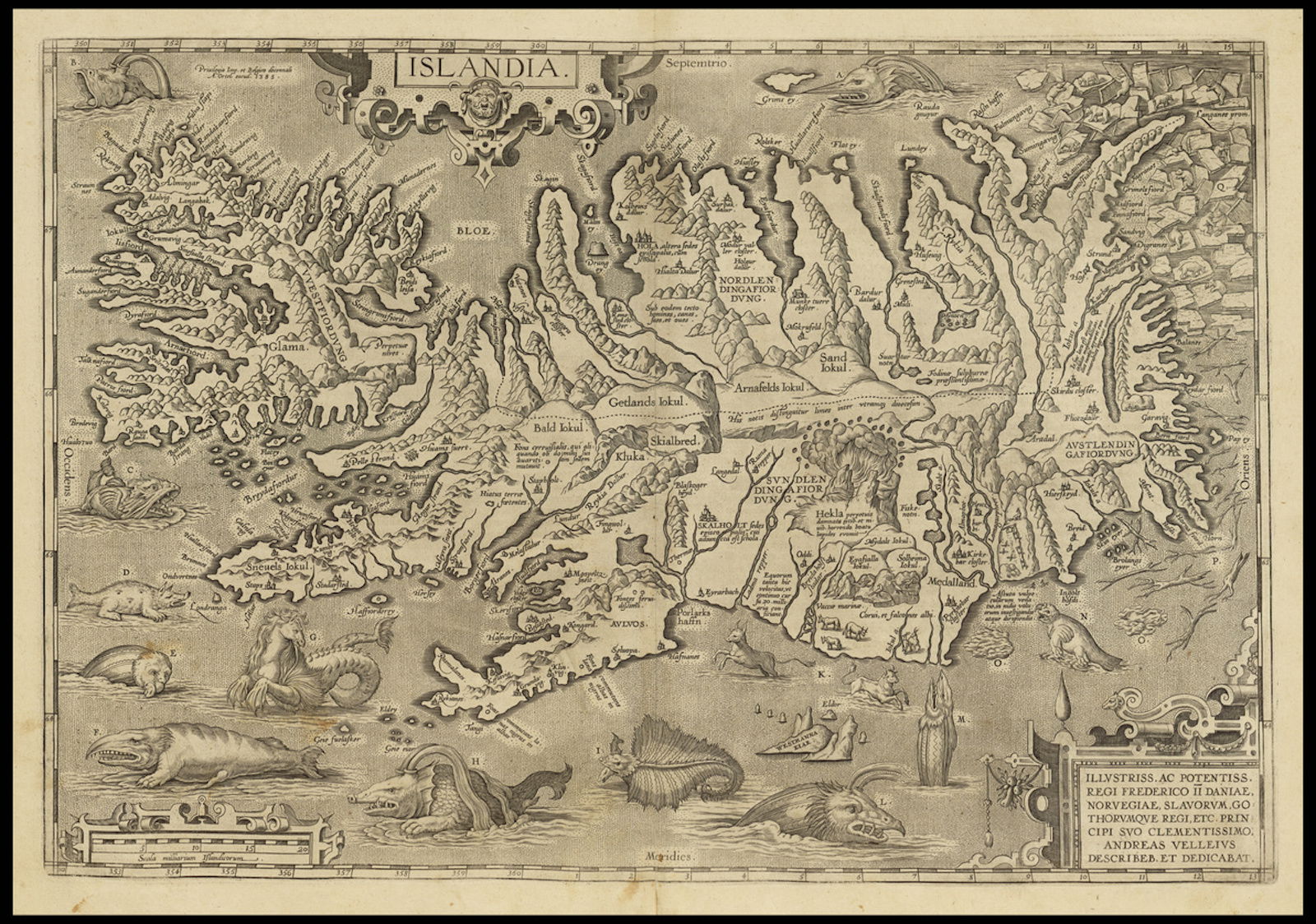Medieval Icelandic Feasts | History Today - 8 minutes read
Blessed be the givers!
A guest has come in,
where is he going to sit?
He’s in great haste, the one who by the log-stack is going to try his luck.
Fire is needful for someone who’s come in
and who’s chilled to the knee;
food and clothing are necessary for the man
who’s journeyed over the mountains.
As the days grow colder and the chilly fingers of the northern wind inch their way under collars, thoughts naturally turn towards some of the fundamental joys – seeking warmth, sharing food, enjoying the company of others, and fostering togetherness. These timeless pleasures evoke the Germanic medieval era, when communal feasting and the display of hospitality served as cornerstones of social bonding and celebration, and whose winter traditions – the provision of clothing, warmth and food for the weary traveller – remain ubiquitous today. The verse above, from the Icelandic poem Hávamál, is just a small part of a collection of Old Norse poems found in the Codex Regius manuscript. Written in the 13th century, the Codex Regius is the most important manuscript preserving these poems. It provides insights into the religious and moral beliefs of the Viking Age and is a crucial source for understanding Norse mythology, wisdom and cultural values; it makes clear, for example, that part of Germanic hospitality included the offering of generosity and kindness to any wintertime visitor. You never know who may arrive at your door.

The same manuscript containing the sage wisdom of Hávamál also holds Grimnismál, a story which cautions its readers even more candidly. The gods Óðinn, the all-father and god of wisdom, and his wife Frigg, goddess of marriage and childbirth, were looking out over the worlds when they spied King Geirroð, whom Frigg remarked was so miserly and inhospitable that he would torture his guests if he thought there were too many of them. Óðinn did not believe this, and the couple made a wager on it. Entering a feast at Geirroð’s hall in disguise as the lowly Grímnir, Óðinn refused to answer the king’s impertinent questions about his identity, making things worse by sitting in a seat reserved only for the most important guest, which the king forbade anyone to sit in. Geirroð, already warned that a magician was arriving at his court to bespell him, had Grímnir tied up in the great fireplace and tortured for eight days. But the king’s son showed Óðinn kindness, bringing him water in the dead of night. For this, Óðinn prophesied that the boy would be a great king in his own right, and that his father’s days of glory were over. Realising what he had done, Geirroð rushed to untie Óðinn; in his haste, his sword fell to the floor hilt-down, impaling and killing the king.
Unlike Dickens’ curmudgeonly Ebenezer Scrooge, in the mythology of the Grimnismál there are no second chances for its coldhearted protagonist. So the message goes, take care to ensure that your guests’ bellies are full, their beer plentiful and their seating befitting of their rank, lest you find yourself in a blood feud by New Year.

As the medieval cautionary tales of the sagas show, the stakes for the Icelandic Yuletide are higher than one might realise. Central still to these celebrations is the feast. Icelandic food traditions are deeply rooted in historical practices, reflecting the resilience and resourcefulness of its people who live in the country’s often harsh and changeable climate. Hangikjöt, or smoked lamb, originated in the ninth century, when the land was settled by Norse explorers and meat was preserved by hanging and smoking over birch wood (hangikjöt means ‘hung meat’).
Another popular contemporary dish with a deep-rooted historical context is rjúpa, or rock ptarmigan, a small game bird native to Iceland. This bird is roasted or fried and accompanied by other preserved meats, red cabbage and lingonberries. At the time of the arrival of the first settlers Iceland was uninhabited, only occasionally used as a hunting outpost for far-ranging Norwegians. The Norse people were forced to eat what little animal life is native to Iceland as they waited for their livestock to flourish: birds such as the ptarmigan and their eggs; síld or pickled herring; berries, one of the country’s few edible plants; and small quantities of vegetables and grain that were grown during the Medieval Warming Period (c.950-1250), a climatic interval that brought about higher temperatures in certain regions and had the potential to radically alter ecosystems – for a time. From these small amounts of grain, Icelanders could make what they called laufabrauð, ‘leaf bread’, a cracker-like bread cut with intricate patterns – snowflakes and tiny triangles – cut before frying. This, too, is a testament to the lean times before the sunshine and new lambs arriving in spring: Icelanders took dwindling grain supplies and made them into something beautiful.
The side dishes and desserts, too, carry a rich tradition. For centuries Iceland remained an outlier, isolated from its continental European contemporaries. The food supply was limited to what could be produced on the Island; Skyr for example, a soft Icelandic cheese, is whipped into pillowy mounds and sprinkled with apples, berries and honey. The dish is more than culinary delight – it reflects ancient celebrations, the resilience of the people, and the resourcefulness ingrained over centuries of farming on the edge of the Arctic Circle. The simplicity of these ingredients is a testament to the endurance of a culture in the face of uncertainty, living in sod huts half underground, where women worked to produce the best skyr, butter and cheese. In the late medieval period food supplies began gradually to improve, as Iceland began to engage in more trade. Spices became more available to Icelandic merchants, evidenced by piparkökur, Icelandic gingerbread biscuits, appearing on tables next to the laufabrauð and skyr. By 1758 potatoes were successfully being grown in Iceland; before long they were incorporated into holiday meals with a caramelised topping of sugar and butter.

The Icelandic sagas, written in Old Norse during the 13th century, set down the country’s rich history in writing. Recounting the historical events of the country’s tumultuous early settlement alongside legendary tales and the (somewhat fictionalised) experiences of early Icelandic settlers, the sagas, particularly the Icelandic Family Sagas – of which Egils saga Skallagrímssonar is one – echo daily life at the beginning of Icelandic society. A genre of prose narratives created by scribes, both those working for the church and those employed by wealthy landowners, they convey the importance of feasting and gift-giving in medieval Iceland, necessary as conspicuous displays of wealth and consumption and vital to the formation of relationships.
In Egils saga Skallagrímssonar, a story dating back to 1250 in its oldest fragment, the saga hero Egil – a large, strong man descended from trolls, with a gift for poetry and magic runes – went about his usual end-of-year business before joining in Yuletide celebrations. Hosting a lavish Christmas feast, the character Arinbjorn invited friends and prominent farmers, and presented Egil with a specially tailored silk gown adorned with gold embroidery and buttons. Egil, appreciative of Arinbjorn’s generosity, composed a verse expressing admiration for the remarkable host and his festive gifts:
The great man gave me
The gold-spun silk gown,
Freely he conferred it,
No finer friend than he.
Arinbjorn has power
that compares with princes’;
Long the wait
Till his like lives again.
Sjálfráði lét slœður
silki drengr of fengit
gollknappaðar greppi,
getk aldri vin betra;
Arinbjǫrn hefr árnat
eirarlaust eða meira,
sið man seggr of fœðask
slíkr, oddvita ríki.
Though the words of a medieval Icelandic saga may seem spare and undescriptive to a modern reader, we can sense Egil’s gratitude for so fine a gift on a cold winter’s night; Arinbjorn has made a generous gesture, and it will not be forgotten. As we immerse ourselves in the sagas, the sensory impressions of winter celebrations come alive; the spiced meats, hearty stews and the clacking of drinking horns filled with mead and ale allow us to glimpse the cultural and social practices of medieval Iceland in all their richness, during a celebration of the harvest that would carry Iceland’s population through the coldest, most barren part of the year.

In Iceland today, each spoonful of skyr or bite of hangikjöt is a stanza in a culinary verse of its own, a testament to nature and timeless traditions that still embody its medieval roots. A thousand years on the sagas, evoking the essence of Norse culture and hinting at the deep fireplaces of a dim longhouse and the lively chatter of guests crowding those benches closest to the flames, still offer shrewd advice for the Yule festivities: that every great gift deserves a poem in its honour, that you can never have too much food, and to always ensure that there is room at the table for one more, should a guest come knocking at your door.
Beth Rogers is an instructor and PhD student at the University of Iceland in Reykjavík, Iceland, studying topics of food history and medieval Icelandic culture.
Source: History Today Feed